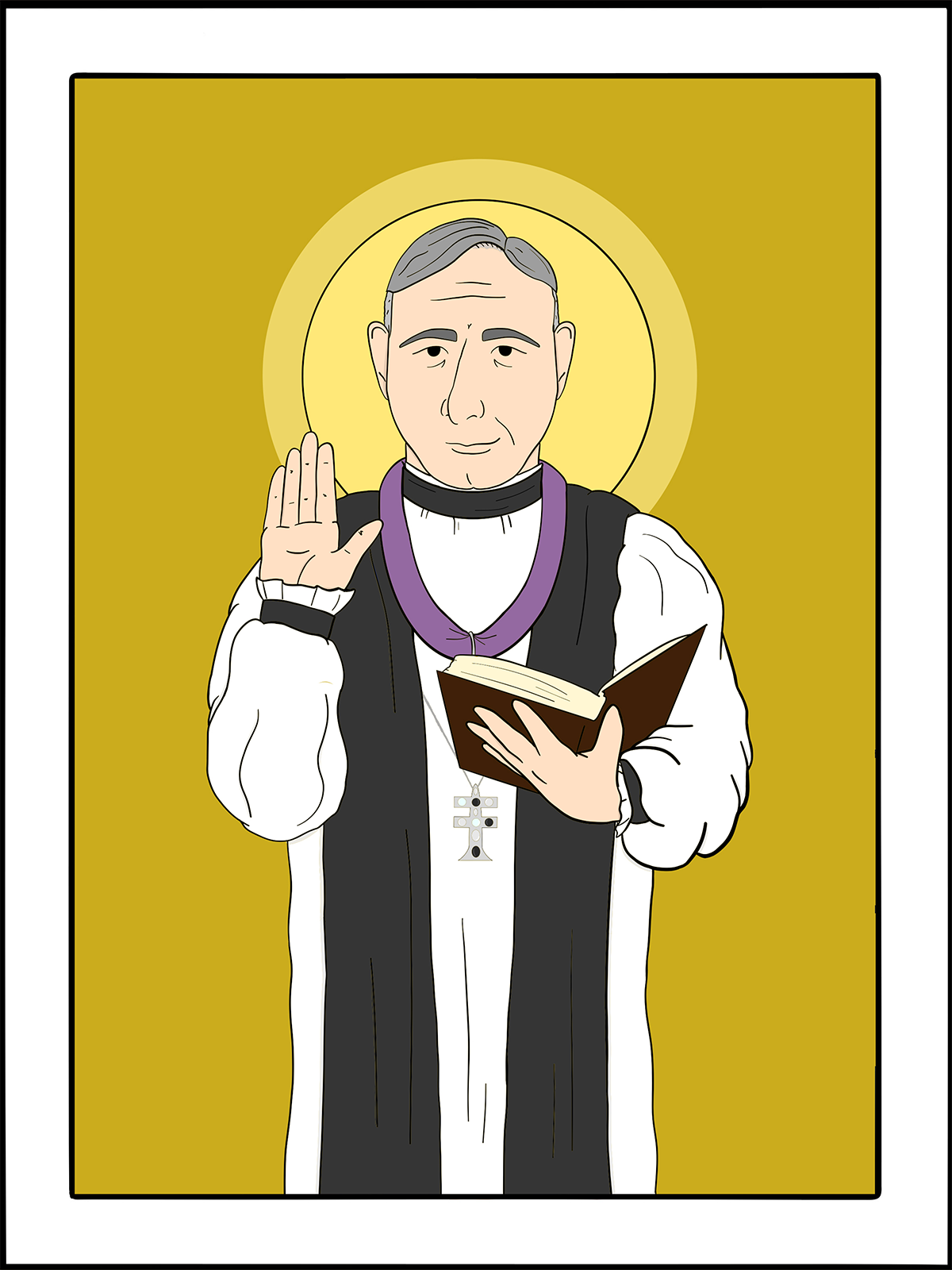
March 27
Charles Henry Brent
Bishop, 1929
art by Rev. Kirsten Kohr of Uhrichsville, OhioHeavenly Father, whose Son prayed that we all might be one: Deliver us from arrogance and prejudice, and give us wisdom and forbearance, that, following your servant Charles Henry Brent, we may be united in one family with all who confess the Name of your Son Jesus Christ; who lives and reigns with you and the Holy Spirit, one God, now and for ever. Amen.
Charles Henry Brent was born at New Castle, Ontario, Canada, on April 9, 1862, and was educated at Trinity College of the University of Toronto. Ordained as a priest in 1887 in Canada, he came to the United States for his first call as an assistant at St. Paul’s Cathedral in Buffalo, New York. In 1888 he became associate rector at St. John the Evangelist in Boston, Massachusetts, with responsibility for St Augustine’s, an African American congregation. He was serving at St. Stephen’s, Boston, when, in 1901, he was elected by the House of Bishops as Missionary Bishop of the Philippines.
In the Philippines, he began a crusade against the opium traffic, a campaign he later expanded to the Asian continent. He became President of the Opium Conference in Shanghai in 1909, and represented the United States on the League of Nations Narcotics Committee. He also established cordial relations with the Philippine Independent Church, which led, ultimately, to a relationship of full communion with that church.
Bishop Brent served as Senior Chaplain of the American Expeditionary Forces in World War I. When General Pershing was given the command in 1917, he asked Brent to organize the chaplaincy for the force and then persuaded him to stay on to run the organization he had created, a first for the U.S. Army in terms of scale and centralization, and the precedent for the creation of the post of Chief of Chaplains in 1920. In 1918, he accepted election as Bishop of Western New York, having declined three previous elections in order to remain at his post in the Philippines.
Brent was the outstanding figure of the Episcopal Church on the world scene for two decades. The central focus of his life and ministry was the cause of Christian unity. After attending the World Missionary Conference in Edinburgh in 1910, he led the Episcopal Church in the movement that culminated in the first World Conference on Faith and Order, which was held in Lausanne, Switzerland, in 1927, and over which he presided. He died in 1929 and is buried in the main cemetery in Lausanne in the section reserved for “honored foreigners”; his tomb is still often visited and adorned with commemorative plaques brought by delegations from the Philippines.
The historian James Thayer Addison described Brent as “a saint of disciplined mental vigor, one whom soldiers were proud to salute and whom children were happy to play with, who could dominate a parliament and minister to an invalid, a priest and bishop who gloried in the heritage of his church, yet who stood among all Christian brothers as one who served . . . He was everywhere an ambassador of Christ.”
Brent was also a man of prayer. One of his prayers for the mission of the church has been included in the Book of Common Prayer: “Lord Jesus Christ, you stretched out your arms of love on the hard wood of the cross that everyone might come within the reach of your saving embrace: So clothe us with your Spirit that we, reaching forth our hands in love, may bring those who do not know you to the knowledge and love of you; for the honor of your Name.”
Excerpted directly from “Lesser Feasts and Fasts 2022,” p. 158-159.
Lessons and PsalmEphesians 4:1-6
Psalm 122
Matthew 9:35-38
Preface of Pentecost

